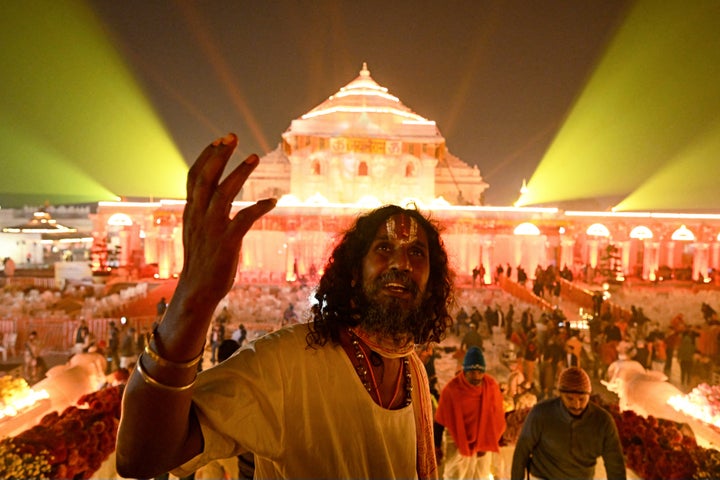Modi Opens Vexed Hindu Temple Built On Razed Mosque’s Ruins
AYODHYA, India (AP) — Indian Prime Minister Narendra Modi opened a controversial Hindu temple Monday that was built on the ruins of a razed historic mosque — a political triumph for the populist leader who is seeking to transform the country from a secular democracy into a Hindu state.
The temple, dedicated to Hinduism’s Lord Ram, sits on a site in the northern city of Ayodhya where Hindu mobs tore down a mosque three decades ago. Its fraught history is still an open wound for many Muslims, who have increasingly come under attack by Hindu nationalist groups. Some see the temple as the biggest example yet of the rise of Hindu supremacy under Modi’s tenure.
Modi’s Bharatiya Janata Party and other Hindu nationalist groups have portrayed the temple’s consecration as central to their vision of reclaiming Hindu pride, which they say was suppressed during centuries of Mogul rule and British colonialism. He and his party hope that opening the temple — which millions of Hindus who worship the deity had demanded — will help catapult the prime minister to a record third successive term in elections expected this spring.
But with the temple still under construction, critics accuse Modi of a hurried opening to woo voters.
And analysts say the pomp-filled display led by the government marks a key moment in India’s history, showing the extent to which the line between religion and state has eroded under Modi. That distinction was seen by India’s founding fathers as crucial to maintaining the country’s communal cohesion.
On Monday, the prime minister, dressed in a traditional kurta tunic, led the opening ceremony as Hindu priests chanted hymns inside the temple’s inner sanctum, where a 1.3-meter (4.3-foot) stone sculpture of Lord Ram was installed last week. A priest blew a conch to mark the temple’s opening, and Modi placed a lotus flower in front of the black stone statue, decked in intricate gold ornaments and holding a golden bow and arrow. He later prostrated before it.
Nearly 7,500 people, including elite industrialists, politicians and movie stars, witnessed the ritual on a giant screen outside the temple as a military helicopter showered flower petals.
“Our Lord Ram has arrived after centuries of wait,” Modi said in a speech after the ceremony, receiving resounding applause from thousands of attendees. He said the temple was built after “countless sacrifices” and is testament to a rising India “breaking the shackles of slave mentality.”
“Jan. 22, 2024, is not merely a date but marks the dawn of a new era,” Modi said.

Money Sharma/AFP via Getty Images
Modi’s government turned the event into a national occasion by organizing live screenings across the country and closing offices for half a day. Saffron flags — the color of Hinduism — adorned the streets of various cities where government party workers had gone door to door handing out religious pamphlets.
Television news channels ran nonstop coverage of the event. Some movie theaters broadcast it live with complimentary popcorn. Many states declared the day a public holiday. In a rare step, stock and money markets were closed for the day.
“Ram Rajya (rule) begins,” a TV news headline said. Ram Rajya is a Sanskrit phrase that means just and ethical governance in Hinduism but has also been used by Hindu nationalists to signify Hindu domination in an officially secular India.
Modi has been the face of an unprecedented and unapologetic fusion of religion and politics in India. Ahead of the temple opening, he set the tone by visiting numerous Ram temples over 11 days as part of a Hindu ritual.
Analysts and critics see Monday’s ceremony as the start of the election campaign for Modi, an avowed Hindu nationalist and one of India’s most consequential leaders.
“Prime ministers prior to Modi have also been to temples, been to other places of worship, but they went there as devotees. This is the first time that he went there as somebody who performed the ritual,” said Nilanjan Mukhopadhyay, an expert in Hindu nationalism and author of a book on Modi.
The temple, located at one of India’s most vexed religious sites, is expected to buoy Modi’s chances of returning to power by drawing on the religious sentiments of Hindus, who make up 80% of India’s population of 1.4 billion.
Ayodhya, once crowded with tightly packed houses and rundown stalls, has undergone an elaborate…
Read More: Modi Opens Vexed Hindu Temple Built On Razed Mosque’s Ruins

